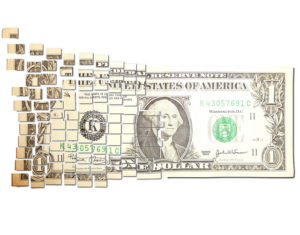
When we invest, we dream of making it big and making it quick. We all have read overnight millionaire stories in the media. Doubling our money every year or even every two years is our ultimate goal. Getting a return of 10-20% each year sounds very pedestrian and unsatisfactory. Who could ever get rich making paltry 15% annual return? Well … you can when time is on your side.
Doubling money every year is a noble aspiration but it does not work when we have many years of investing ahead of us. One might get lucky and double her money in Year 1, sure. Can she continue doing that year in and year out? Math is not with her in this case.
Consider investing your $1000 in a business that promises to double your money every year. Naturally you would want to reinvest all your year-end profits and let it compound over time. If you do it successfully for 10 years, you will have multiplied your original investment a 1024 times. In 20 years, you will have made more than 1 million times. Not humanly possible!
Even less stratospheric rates of returns are too good to be true. Consider same exercise but with just 50% annual return. In 10 years, your money will have grown 57 times. In 20 years, 3,300 times. Hard to achieve!
If you look back in history, even the most successful investors are hard pressed to achieve more than 20% annualized compounded return over their investing career. That’s nothing to sneeze at! 20% return over 20 years is a fantastic achievement if you can scale it as your money grows. In 10 years, your money will have grown 6 times. In 20 years, 38 times. And while we are at it, in 30 years it would have grown a bit more than 237 times!
How 20% return could trump 200% return? Here is a great quote from a contributor on quora.com:
Let’s imagine that a hotshot trader makes 200% returns every year on his $500,000 account, which would be wild success to say the least. The only caveat is that he has to take his profit out every year because the trades can’t scale up any further. He would make $1 million per year — good money if you can find it. After 30 years he would have $30 million in total profits.
Now let’s imagine we invested that money with Warren Buffett instead. Say that instead of 200% he can make 20%, but he can scale indefinitely. That first year, a $500,000 account would kick off $100,000, not much compared to the hotshot trader’s payday. But after 30 years we wouldn’t have $30 million. Thanks to compound interest, we would have $125 million. And where the hotshot trader would have $50 million after 50 years, we would have $4.5 billion!
Related: How does money compound over time?
[…] For instance, $10,000 invested for 20 years would have resulted in $467,000 at the market rate but an average investor only received $319,000 due to his underperformance – or about one-third lower than the maximum achievable. Don’t be dismissive of low returns […]